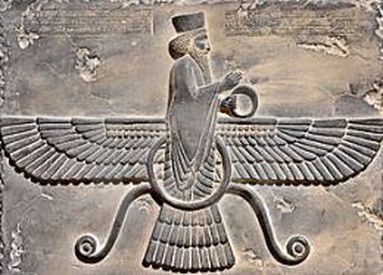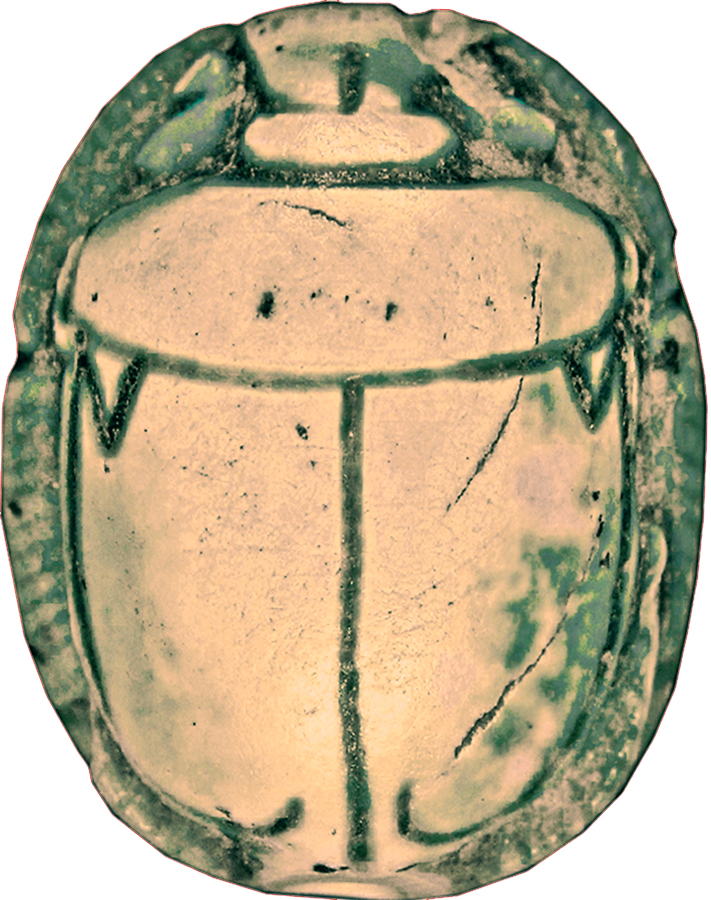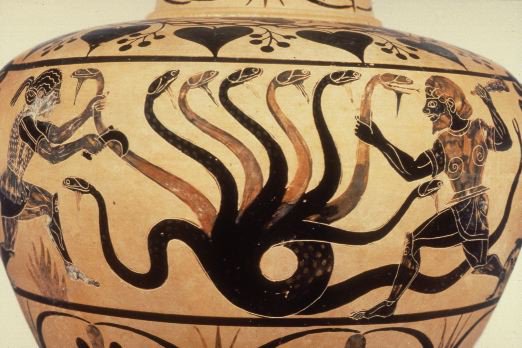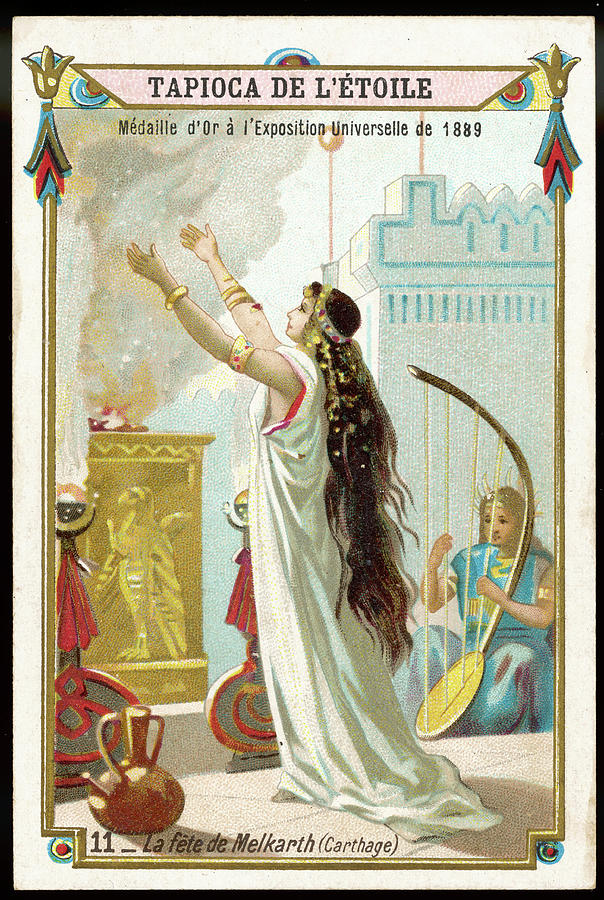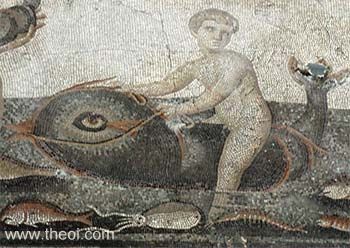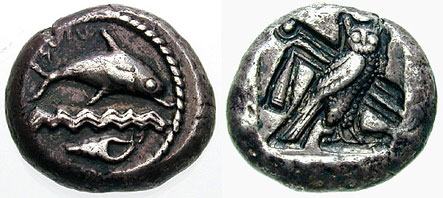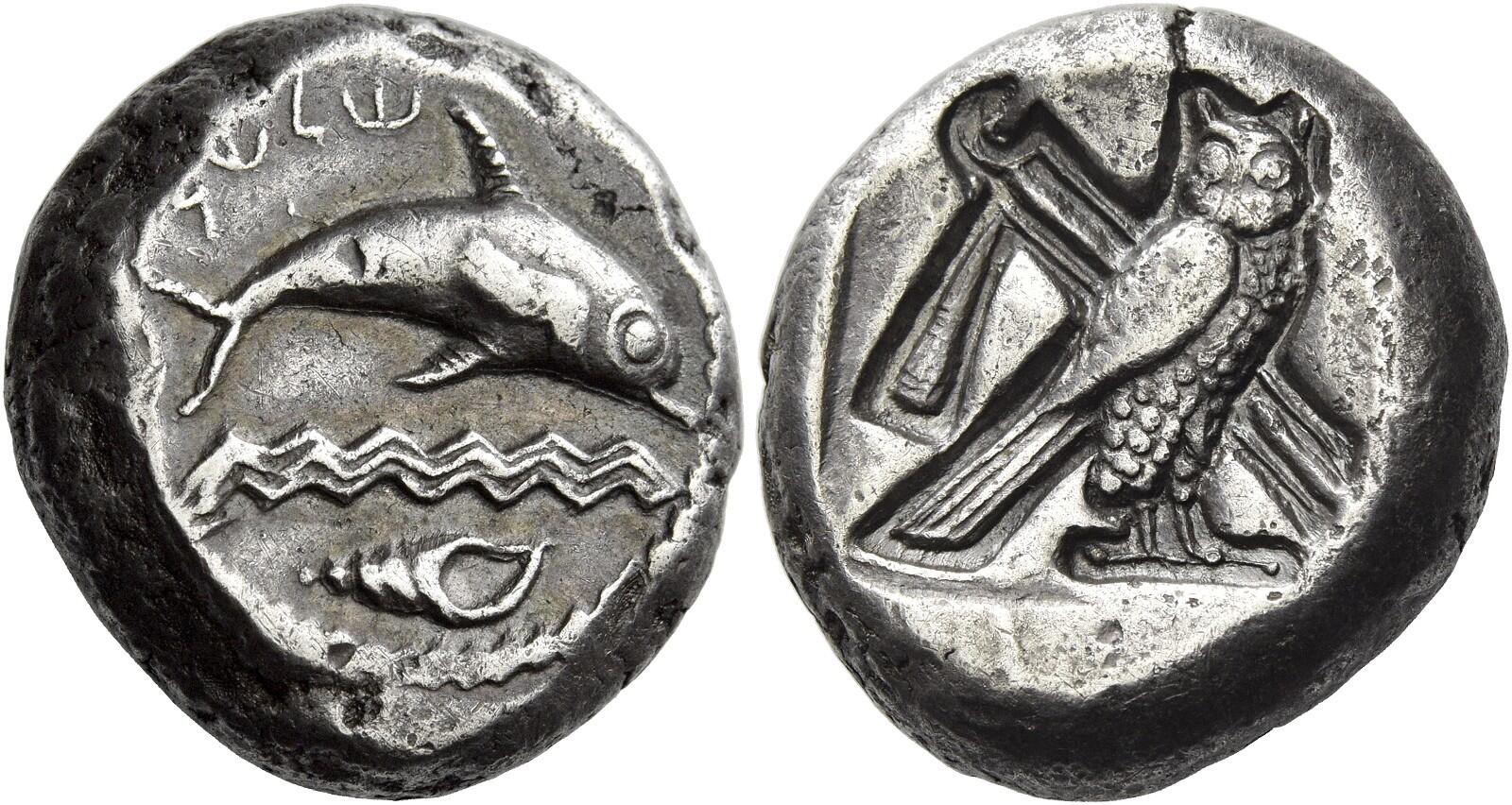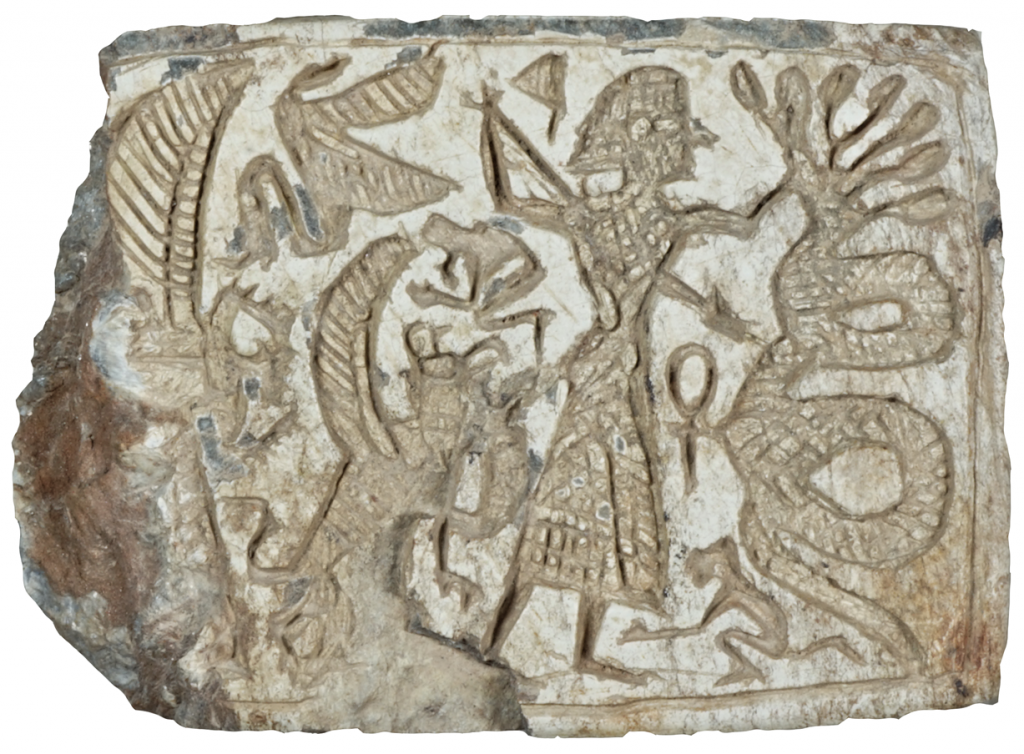
I want to read this Seal. Does a narrative start at the left, read to the right? The centrality of the Great Warrior's combat w/ the Hydra (half the seal) is the main event, but the ideographic story is complex. What does the Oracle of Internet say about all this? ... I've edited the results, which I think DO provide an accurate starting point for further research.
1) The Scarab Beetle, in this context, may symbolize Protection and Divine Authority.
2) The Basilisk may serve as a talisman or Guardian figure behind the Great Warrior, but also Danger, Evil, or Chaos for the Individual.
3) The Dead Person may symbolize the defeated Individual, emphasizing his mortality, fragility of life, etc. in the face of these Terrors. The Borg tells me: "The positioning of the Dead Person behind the Great Warrior may symbolize protection or shelter provided by the Warrior figure. The Warrior, depicted as a priestly or authoritative figure, serves as a Guardian against threats represented by the Basilisk and Griffin. The Dead Person lying before the Basilisk and above the aggressive Griffin may signify the Warrior's triumph over these threats, with the Dead Person safely sheltered behind the protective figure." Also, on the 'Hierarchy of Forces': "This arrangement may symbolize the Warrior's intermediary role as a protector or mediator between mortal beings and cosmic or supernatural forces." Positioning the Dead Person behind the Great Warrior may symbolize Safety, sheltering behind the protective figure, since the Warrior, depicted as a (priestly?) Authority, serves as a guardian against Terrors (i.e. Basilisk and Griffin).
4) A Small Triangle (Spade?): Unclear.
5) A Priestly (?) Warrior, Slaying "The depiction of a Warrior figure, possibly with priestly attributes, slaying an opponent, suggests themes of strength, ... and the struggle against Evil or Chaos. The combination of priestly and warrior attributes may symbolize Divine Authority or sanctioned action." Also "a warrior figure with priestly attributes suggests a combination of religious and martial authority. This {Priestly-Warrior} likely held a position of high status within the society, perhaps serving as a religious leader or as a military commander with religious sanction. The seal may have been used to authenticate documents, assert authority, to confer blessings or protection.The depiction of the Warrior slaying the Great Serpent may symbolize the Authority's role in confronting and overcoming existential threats to the community or kingdom. This imagery reinforces the idea of the Authority as a Protector and Guardian of Order."
6) Giant Serpent, w/ Seven Heads ... {this one failed: I think its Yammu*, see below.}
7) "The Ankh is an ancient Egyptian symbol representing Life, Immortality, and Divine Power. Its presence on the seal may signify blessings, protection, or divine favor. Additional symbols on the seal, such as the ankh (representing life and immortality) and the crouching Worshipper may further reinforce the Authority's religious and spiritual significance. These symbols could also indicate the Authority's role in mediating between the divine and the mortal realms, ensuring prosperity, stability, and divine favor for the community."
8) A Crouching, Worshipful Man: The depiction suggests reverence, devotion, or submission to Divine Authority.
9) A Mysterious Cherub Basilisk Creature (Heavily-Damaged), "The Griffin's presence on the seal may symbolize the Authority's divine mandate or connection to Higher Powers. The aggressive posture of the Griffin suggests a readiness to defend against threats and assert control over the territory."
This read also seems to be correct (although the last bit is phrased too optimistically, I think):
"Narrative Tension: The positioning of the figures in this arrangement could create a sense of narrative tension or conflict, with the Dead caught between the protective presence of the Warrior and lesser but looming threats represented by the Basilisk and Griffin. This arrangement may evoke themes of struggle, bravery, and the human condition in the face of adversity."
* See Rosanna Ann Lu, "The Deification and Demonization of Tĕhôm: From Deity to Deep" (Ph.D. Diss., 2018) --
Note her Appendix B, for relevant OT references in Hebrew.
4
... Ugarit’s TNN dragon6 and LTN,7 the seven-headed dragon of the sea god Yammu, 8 parallel the Hebrew Bible’s sea dragons Tannin and Leviathan.
6. LTN, the monster that collaborates with or personifies Yammu, cf. Dictionary of the Ugaritic language in the Alphabetic tradition [2004]: “ltn”, p.507.
93
Repetition emphasizes the characteristics of the slain and reminds the audience of the subjugator’s actions—Baal has defeated Yammu/the Sea and his manifestations, Naharu/Judge River and TNN (tunnanu dragon), an epithet for the twisty seven headed sea monster, LTN. As LTN/Leviathan is the “mythical monster that collaborates with or personifies the god Yamm,”196 Baal’s defeat of Yammu includes the vanquishing of the sea monster whose twisting form reflects its realm of the sea. Cross also makes the connection that this seven-headed dragon, is the sea itself: we can imagine that in Canaan as in Mesopotamia and Israel, Sea was portrayed as a seven-headed dragon, a dragon to be slain in order to establish the rule of the warrior-king of the gods.197
Additional repetitions of epithets and synonymous parallelism show that Yammu’s personifications and extensions as Naharu/River and LTN/Sea Monster ultimately represent Motu/Death.
197 Frank Moore Cross, Canaanite Myth and Hebrew Epic: Essays in the History of the Religion of Israel(Cambridge: Harvard University Press, 1997), 119-20. Elsewhere, the Hurrian god of the Sea, Kiyaši, is similarly equated with its serpent counterpart (apši), which also is closely identified with the Ugaritic Sea-dragon TNN (tannin/tunnanu), cf. Meindert Dijkstra, "The myth of apši ‘the (sea)dragon’ in the Hurrian tradition," UF 37 (2005): 320-21


